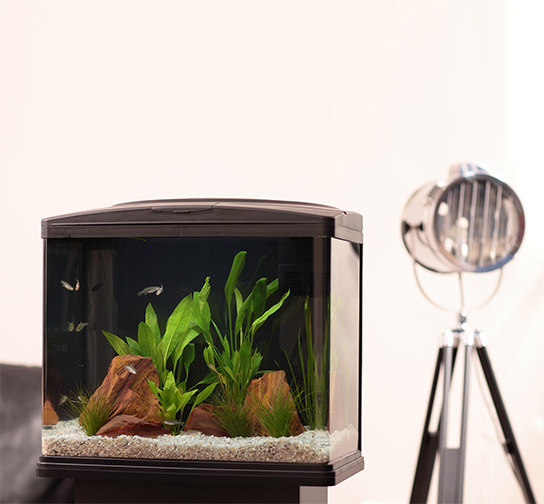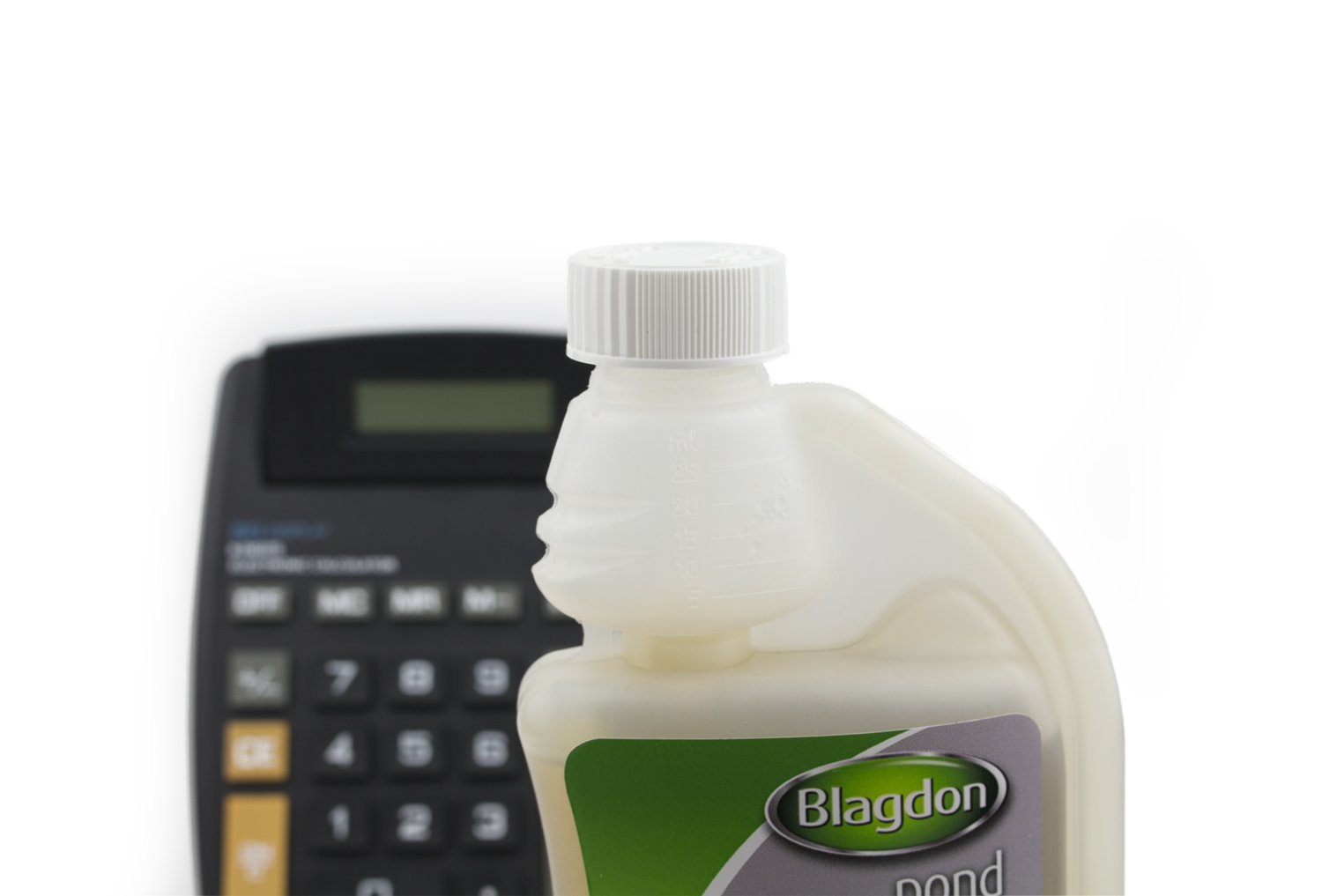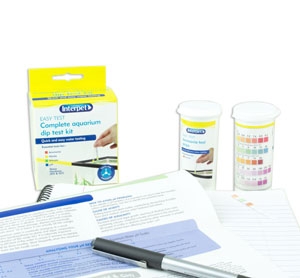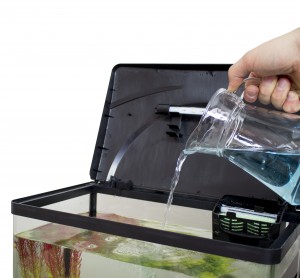Aquarium Problems
Why test my water?
The majority of aquarium problems can be avoided by maintaining a healthy water quality. Processes like the Nitrogen Cycle change the chemical balances in the water. If your biological filtration cannot cope with the waste in your aquarium, the water can become unsafe for your fish but the change will often be invisible to the human eye. Testing your water regularly will allow you to monitor levels and treat any problems before they become a real issue to your livestock.
How do I get rid of hair algae?
The common causes of hair algae are excessive light – especially natural light – and excess nutrients in the aquarium water. Treat the tank using Anti Hair Algae and ensure the aquarium lighting is on for no longer than 10 hours (this can be achieved using an Interpet LED auto timer or house hold timer for traditional lighting). Find out more here.
How do I get my water clear?
The most common types of unclear water are: green water (suspended algae) or cloudy water (suspended dirt or bacterial bloom). Your treatment will depend on what is causing the water to cloud, use the diagnose what’s wrong page to ascertain the problem and consider testing your water for irregularities.
How do I get rid of Green water?
The common causes of green water are excessive light – especially natural light – and excess nutrients in the aquarium water which will cause a bloom of suspended algae. Treat the tank using Green Away which will clump the floating algae together, it will then become filtered out by your filter. Ensure the aquarium lighting is on for no longer than 10 hours (this can be achieved using an Interpet LED auto timer or house hold timer for traditional lighting). Find out more here.
What is the Nitrogen cycle?
The Nitrogen Cycle is a naturally occurring cycle driven by the biological filter in your aquarium which processes waste in the water. Find out more in our filtration article.
What is ‘New tank syndrome’?
New Tank Syndrome is an umbrella term for the water quality issues caused by an immature biological filter usually found when a new aquarium is set up. These problems can often result in cloudy water, loss of livestock or extreme fluctuations in water quality. Find out more here:
Can I use tap water in my aquarium?
You cannot use tap water on its own in an aquarium however you can treat your tap water with Bioactive Tapsafe plus or Goldfish Fresh Start to make it safe for use in your aquarium. Tap water contains chemicals like chlorine and heavy metals which are harmful to fish so water must be treated every time it is added to an aquarium.
Should I drain my aquarium?
You should never have to completely drain your aquarium, in fact, doing so is likely to cause more bad than good. Any water quality problems should be easily addressed by completing small but regular water changes. Removing large amounts of water from your aquarium will stress your fish and could also lead to filtration problems as fresh water that includes chlorine will kill the bacteria in your aquarium.
Using Treatments/Test Kits
How much should I treat?
You can use our online dosage calculator to find out how much treatment you should use for your aquarium size
How often can I treat my aquarium?
Treatment redosing varies from product to product. You can use our dosage calculator to find out if your product requires a secondary dose or visit the product page for further details
Can I use more than one medication at a time?
No you cannot use more than one Interpet First Aid Treatment at a time. You can however use medications at the same time as Interpet Water Treatments
I have used an aquarium medication but the problem has not cleared up, can I redose?
Visit the product page for specific details on redosing. Test your water to check for any water quality issues that could be preventing the treatment from becoming effective and assess the fish for symptoms of other infections which may require a different course of treatment
Is it safe for my pets to drink from a treated aquarium?
In short, other animals or humans should not drink water from a treated aquarium. The chemical components vary from treatment to treatment but as a rule we would not advise allowing pets to drink from any tank, not only for their health, but also for the health of the tank as pets can introduce contaminates to the water. All Interpet treatments are listed with the National Poisons Bureau who can be contacted by your hospital, doctor or vet.
When using the New Aquarium Start Up Kit why is the ammonia or nitrite not falling to 0mg/l?
- Sometimes, when lots of ammonia is present, it prevents the beneficial bacteria from multiplying.
- When the beneficial bacteria remove ammonia and nitrite, this causes the aquarium water pH to drop. Make sure that the pH has not dropped to 6.4 or below as this will cause nitrification to slow or stop completely.
- Bacteria require minerals to grow and reproduce. If the water in your aquarium has a KH and GH of 0°dH then this may be preventing the bacteria from multiplying.
All of these problems can be helped by performing a 25% water change to restart the cycle. Make sure the pH is 6.8-8.0, KH is 3-15°dH and GH is 3-14°dH in the water you are adding, otherwise it will not help to solve the problem.
When using the New Aquarium Start Up Kit why is my nitrate really high already?
Because of the nature of how the test strips work, when an elevated amount of nitrite is present it will falsely show that there is a significant amount of nitrate present also. Ignore the nitrate results until nitrite has returned to 0mg/l.
If you have further questions, please take your results to a good aquatic retailer who can give you further advice on why the cycle is stalling or contact customer care at customercare@interpet.co.uk.
Fish
I don‘t know what’s wrong with my fish, what should I do?
Firstly, look through our Diagnose what’s wrong page and identify symptoms similar to those of your fish. If any of those match click through to see our recommendations for what to do next.
Secondly, test your aquarium water which will highlight any underlying water quality problems. Issues with water quality will often make your fish appear unwell and can lead to outbreaks of disease
My fish is floating, what’s wrong?
Buoyancy issues can be caused by several aquarium problems. Check for other symptoms related to Swimbladder infections, this can be especially prevalent in fancy Goldfish. You can also test your aquarium water which will highlight any underlying water quality issues which could be affecting the buoyancy of your fish
My fish is flicking on the ornaments, what’s wrong?
Flicking or scratching on ornaments is often a sign of bad water quality. Test your aquarium water using a test kit and use the Diagnose what’s wrong page to identify your next actions.
Flicking and scratching may also be a sign of parasitic infection, however in this instance there would be other visible symptoms. Take a look at the Diagnose what’s wrong page to get to know the other possible symptoms.
Why is my fish jumping?
Erratic behaviour, such as a jumping, in fish is often a sign of bad water quality. Test your aquarium water using a test kit and use the Diagnose what’s wrong page to identify your next actions.
Why has my fish stopped eating?
If your fish have lost their appetite, check for physical or behavioural symptoms of illness. Take a look at the Diagnose what’s wrong page to get to know disease symptoms which you can then address.
We would also recommend testing your water for quality issues which may have led to your fish feeling unwell.
Should I remove the sick fish from the aquarium?
In most cases removing fish from their home is likely to cause more harm than good. A separate aquarium will have different water quality, temperature and could cause unnecessary stress. If you are concerned that your fish is being bullied by others during treatment you could consider using a floating fry net which will separate the fish whilst keeping them in their natural habitat





